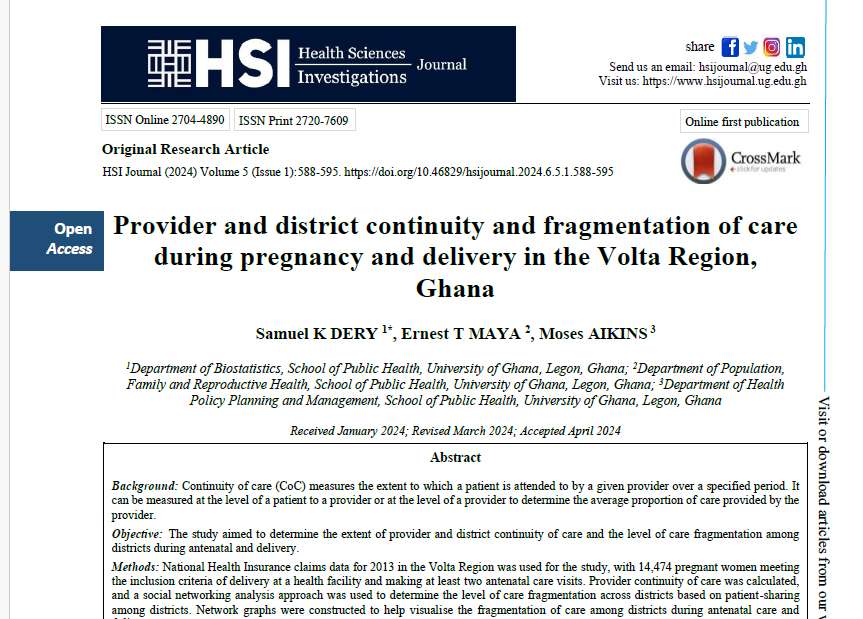Provider and district continuity and fragmentation of care during pregnancy and delivery in the Volta Region, Ghana.
Provider and District Continuity and fragmentation of care during pregnancy and delivery
Abstract
Background: Continuity of care (CoC) measures the extent to which a patient is attended to by a given provider over a specified period. It can be measured at the level of a patient to a provider or at the level of a provider to determine the average proportion of care provided by the provider.
Objective: The study aimed to determine the extent of provider and district continuity of care and the level of care fragmentation among districts during antenatal and delivery.
Methods: National Health Insurance claims data for 2013 in the Volta Region was used for the study, with 14,474 pregnant women meeting the inclusion criteria of delivery at a health facility and making at least two antenatal care visits. Provider continuity of care was calculated, and a social networking analysis approach was used to determine the level of care fragmentation across districts based on patient-sharing among districts. Network graphs were constructed to help visualise the fragmentation of care among districts during antenatal care and delivery.
Results: There were 196 providers from 26 districts involved in the study; 15% (n = 2,185) of the pregnant women had caesarean section (CS) delivery. The average provider and district continuity of care scores were 67% and 81%, respectively. About 12.70% (n = 1838) of all deliveries and 19.95% (n = 436) of all caesarean section deliveries were fragmented across districts. Among those with multiple providers, about 30.51% (n = 1,838) of all deliveries and 45.41% (n = 436) of CS were fragmented across districts. Eight districts that do not have hospitals located in them had more fragmentation during delivery (25% - 81%) compared to districts with hospitals.
Conclusion: Fragmentation of care during antenatal care and delivery was higher in districts without hospitals compared to districts with hospitals.


